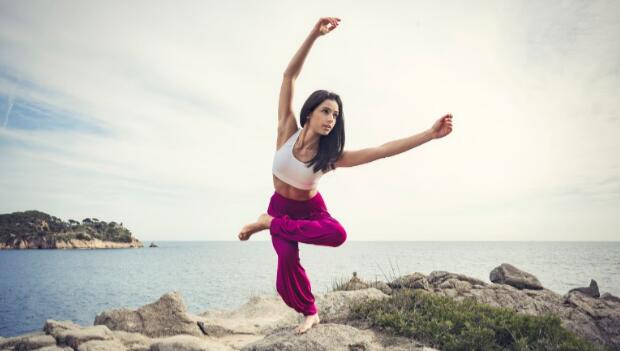
Years ago, I went to my first yoga class with a friend who swore it would help my running and triathlon performance. That class embodied my worst fears: It began with chanting and ended with 10 minutes spent lying on the floor. During that forced period of stillness, I fidgeted and stared at the ceiling, wondering how much longer I had to lie there before I could go do my "real" workout. Yoga, I decided, was not for me.
But a few years later, recovering from an illness, I decided to give yoga another try. One weekend in San Francisco, I attended a class for beginners at a renowned yoga studio. In my running shorts and sneakers, I definitely did not fit in.
But in that class with an expert teacher, who provided clear instructions and focused on the poses, I felt challenged, stretched and invigorated. I finally understood why more than 11 million women in the U.S. practice yoga, according to the 2008 Yoga in America survey conducted by Yoga Journal. As I've added yoga into my regular routine, I've discovered a wealth of benefits, from increased upper body and core strength to a reduction in knee pain.
Don't let yoga intimidate you. Use these tips to get started.
Find the right fit. Sage Rountree, a certified triathlon and cycling coach, yoga instructor and author of The Athlete's Guide to Yoga, likens choosing a yoga class to buying a new pair of running shoes. "You wouldn't buy the first running shoe you saw without trying it on would you? Just like you need to try on a few brands, you also need to try out a few types of yoga and instructors," she says. "And just like a specialty running store, a yoga studio, not your local gym, may be able to help you find the best fit."
To find the right class for you, call the studio in advance and talk to an instructor, recommends Rountree. Also ask if they offer a class designed for athletes, which often is challenging, but gentle on athletes' commonly tight hips and hamstrings.
Know the etiquette. Arrive five to 10 minutes before class to get floor space where you feel most comfortable. Borrow a mat from the studio or bring your own and unroll it facing the instructor. Take off your shoes and socks and place them out of the way. Ask classmates what props (straps, blocks) you may need to grab from the studio's storeroom.
Communicate. Before class starts, introduce yourself to the instructor and share your background and goals. "Tell your instructor where you're tight or feel pain," says Rountree. That way, the instructor can help guide you through poses in the most beneficial way for your body. Don't compete. "Keep your eyes on your own paper," says instructor Chris Acosta of St. Petersburg Yoga in St. Petersburg, Florida.
Translation: Don't try to outstretch your neighbor. Instead, aim to take a pose "to your edge," says Acosta, where you feel it, but it doesn't hurt. If you push through the pain in yoga, you won't win anything but an injury.
Breathe. It's common for newbies to hold their breath during yoga poses they find challenging. But breathing deeply can "help you relax and be efficient in a pose," says Rountree. In the beginning don't worry about matching the instructor's breathing instructions exactly; just find your own rhythm.
Practice a basic pose. Downward-facing dog is a staple of any beginner yoga class. The pose is designed to stretch many muscle groups in your body and maintain neutral alignment of your spine. With practice, it will feel like the resting pose it's intended to be, but at first this pose can feel just as challenging as the rest. Try it at home with these instructions from Kimberly Fowler, a triathlete, marathoner, yoga instructor and founder of YAS Yoga & Spinning Fitness Centers in L.A.


